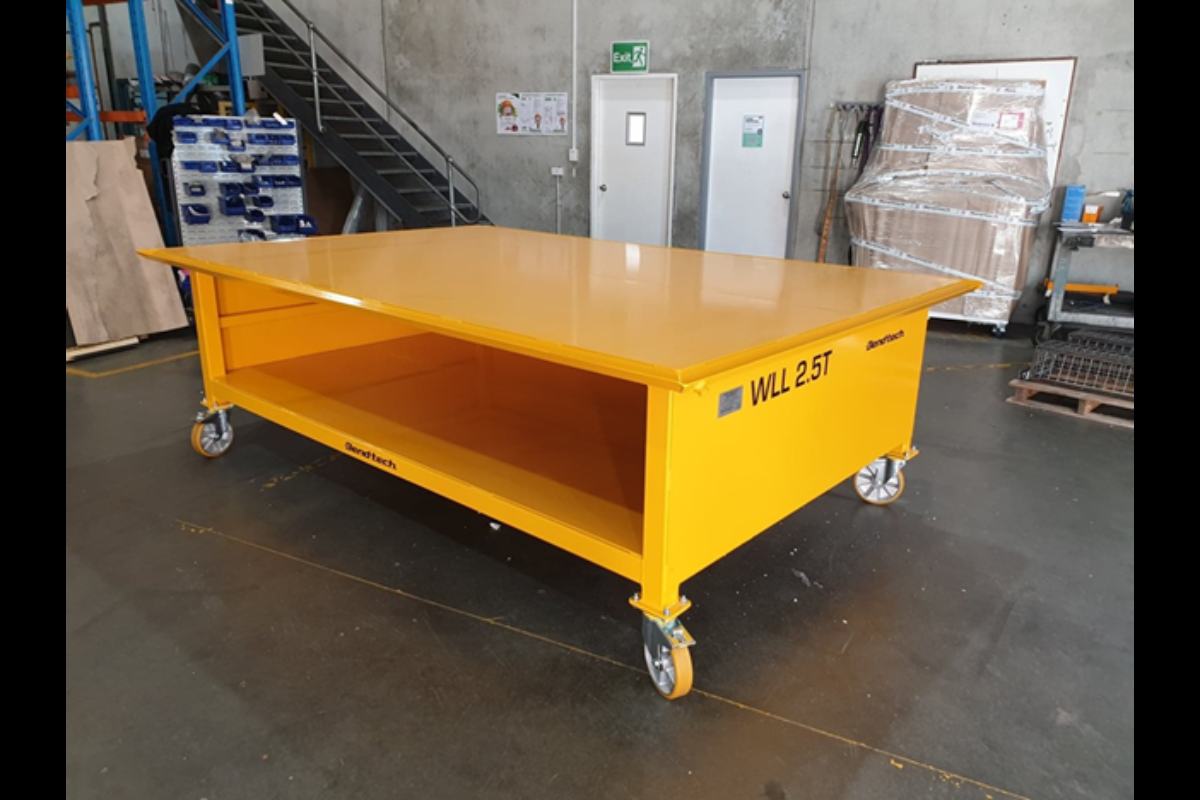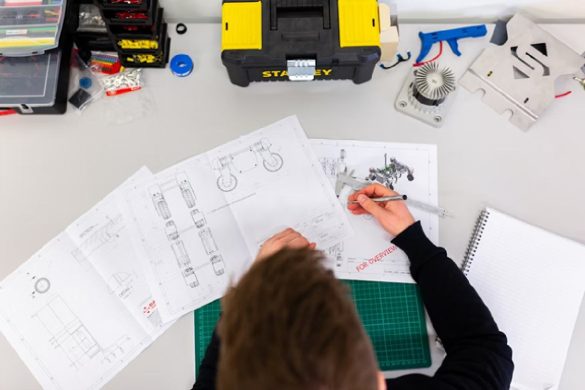Creativity is central to engineering and plays a big part in driving innovation. Although people often see engineers as more analytical than creative, imagination is just as important for tackling unexpected problems and challenges that come up in their work.
Many engineers are trained to trust objective facts, such as the laws of gravity or how electricity works. While this kind of thinking is important, it can make it harder to approach problems that aren’t black and white or that break the usual rules.
One major hurdle is ‘cognitive fixedness’, which is the habit of sticking with familiar solutions and missing out on new ways to use what is already there. Engineers can strengthen their creative skills by learning to make the most of limitations, using problem-solving techniques, staying open to unusual ideas, and becoming comfortable with uncertainty.
Regularly questioning assumptions and checking for hidden biases during projects helps ensure ideas stay fresh and inventive. The effort to break free from fixed ways of thinking allows engineers to go beyond the usual limits, turning out ideas and solutions that stand up in a fast-changing, resourceful world.
Table of Contents
The Impact of Cognitive Fixedness on Innovation
Cognitive fixedness can quietly hold back innovation in engineering. It basically means getting stuck with familiar solutions and always following tried-and-tested methods—great for routine tasks but a real roadblock when new ideas are needed.
This habit often comes from a focus on certainty in engineering education, where facts and what can be measured are given top priority. But if engineers want to push boundaries, they have to learn how to spot and move beyond this kind of thinking.
There are practical ways to do this. Seeing constraints not as obstacles but as launching pads for creativity can make a real difference. Mastering fresh problem-solving techniques and finding new uses for what’s already available also open doors to unique ideas. Being willing to think flexibly, even when something seems counterintuitive, helps break old habits. Getting comfortable with uncertainty and allowing for some contradiction paves the way for more inventive solutions.
To put these ideas into action, engineering teams should regularly challenge their own assumptions and check for hidden biases as part of their projects. These habits help reveal hidden blocks and keep thinking sharp, especially when resources are tight. By paying attention to cognitive fixedness, engineers set themselves up for more original and practical solutions.
From Idea to Invention
Turning an idea into an invention rarely follows a neat, straight line. Usually, it all starts when someone notices a problem or a need and thinks, ‘Hang on, surely there’s an answer to this!’ That spark leads to an idea that might fill the gap.
From here, it pays to dig deep with research. Is your idea already out there? Will it actually work? This stage involves plenty of exploring existing solutions and carefully testing if your initial thought actually has legs. Often, once that basic idea has taken shape, brainstorming sessions come into play to tweak things and make sure no good option is overlooked.
After research and brainstorming, the next step is getting something you can actually see or touch—a prototype. Putting your idea into a physical (or digital) form makes it much easier to spot what’s great, what needs fixing, and where things might go wrong. Testing and tweaking is vital here; feedback will shape the design far more than wishful thinking ever could.
If your prototype stands up to scrutiny, it’s time to move to the real deal—a proper product design. This means getting into the nitty-gritty, like which materials to use, how everything fits together, and how to make it work reliably without blowing the budget. Here, the goal is efficiency and practicality, but also making sure you’re hitting all those original goals discovered right back at the research stage.
One handy method that makes this whole process less guesswork and more creative science is Systematic Inventive Thinking (SIT). SIT is a structured set of tools that gets engineers to break away from the usual routine and see their problem with fresh eyes. The approach stands out because it uses concrete tools—think subtraction, multiplication, dividing tasks, combining roles, or playing with how things depend on each other—to spark ideas you might never come up with when just daydreaming or chatting round a table.
By working through SIT, engineers build up their creative confidence and can get their ideas moving faster and with fewer blind alleys. Even more important, it helps you sidestep that common trap where your brain stubbornly clings to what’s familiar. Instead, you learn to treat limits as inspiration—not as deal-breakers—and that’s often where the really good inventions come to life.
Cultivating a Creative Mindset
Being able to think in ways that go against instinct doesn’t come naturally to most of us. It means moving past your usual thought habits and giving unexpected ideas a real chance. For engineers, who often lean on clear-cut facts and proven methods, this takes a bit of nerve—letting go of assumptions to make space for fresh solutions.
Counter-intuitive thinking is about being willing to explore ideas that, at first, might sound odd or even wrong. Oddly enough, it’s often these ‘unusual’ ideas that lead to breakthroughs, since they push you down paths most people simply pass by.
Dealing with limits is a big part of engineering, but limits don’t have to be the enemy. Instead of treating things like tight budgets or strict deadlines as problems, see them as springboards for creativity. Limits can sharpen your thinking, making you dig deeper and come up with answers you wouldn’t reach otherwise.
Working within limits encourages engineers to imagine new ways forward. The result isn’t just clever thinking; it’s solutions that work in the real world, not just on paper.
Practical Tools and Approaches
Thinking tools can completely refresh how engineers make the most of what they already have, pushing them to look past traditional uses and imagine new possibilities. Tools like Systematic Inventive Thinking are especially handy for encouraging a mindset shift, turning every limitation into a possible springboard for original ideas instead of seeing it as a setback.

By giving existing tools and materials a second look, engineers can spot new ways to use them, often landing on clever solutions with little or no extra spending or wasted effort. In this context, understanding the advantages of certified workshop benches and tables can also inspire more efficient and creative use of space and equipment in engineering environments, especially when budgets or resources are tight.
Alongside creative thinking tools, engineers get a lot of mileage from regularly questioning what they’re taking for granted and actively searching for hidden biases. Stopping to challenge your own assumptions makes it much easier to catch habits like cognitive fixedness, which can get in the way of fresh solutions.
Checking for these mental blocks isn’t just ticking a box. It helps engineers develop more inventive answers while keeping their work flexible enough to deal with surprises along the way. Building in bias checks and regular assumption testing keeps minds sharp and the path clear for new ideas to flourish, no matter how complicated or unpredictable the project might be.
Enduring Principles for Engineering Creativity
Creativity is the driving force behind real innovation in engineering. While technical skill gives engineers the tools they need, creativity is what turns routine tasks into opportunities for discovery. It’s this mix of logical thinking and imagination that allows engineers to break away from the usual solutions and try something new.
Relying only on technical knowledge is not enough. Engineers who also build their creative skills end up better prepared for changes in technology and unexpected challenges. When you have confidence in your creative ability, you’re quicker to spot opportunities and solve problems in new ways, not just the ways that have always been done.
Cultivating creativity alongside technical skill is less of an optional extra and more of a necessary edge. It helps engineers see possibilities hiding in plain sight or turn what looks like a barrier into a stepping stone.
Adopting methods like Systematic Inventive Thinking encourages a fresh look at every problem. Instead of following the most obvious path, these tools get engineers to think differently, break routines, and see new links between existing ideas or materials. Limitations can be frustrating, but with the right mindset, they often spark the cleverest solutions.
Using creativity as part of everyday engineering isn’t just about ‘artsiness’; it’s about making real progress, even when budgets are tight or things don’t go to plan. The best advances in design and technology usually appear when engineers are free to experiment, adapt, and see beyond the usual boundaries.

